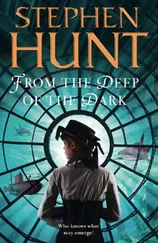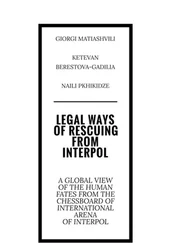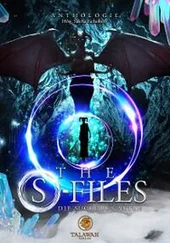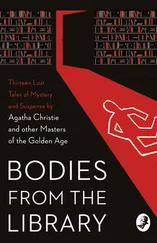The doctor took out Scyrel’s vital organs. What remained of Scyrel was ushered back to his grave. At the laboratory of the University of Michigan at Ann Arbor, Scyrel’s vital organs were found to be shot through with arsenic. Boomhower thought things over carefully when he got the news. Then he did a most unusual thing. He called Doctor MacGregor into his office.
“Doc,” he said, “I have something unpleasant to take up with you.”
“What?”
“There’s been a lot of talk in town about all those deaths in the Spading family. So, just to settle the thing one way or the other, I had Scyrel’s body exhumed.”
“Is that so?” said MacGregor, calm as could be.
“Yes,” Boomhower continued, “I sent the vital organs to the University of Michigan.” “And what did they find?”
“Arsenic!”
MacGregor looked out the window and drummed his fingers on a table.
“Do you know,” he said at length, “I’m not at all surprised.”
“You’re not? Why not?” MacGregor looked earnestly at Boomhower.
“Why,” he said, “because of all that tonic that those boys swigged. I told you that before! You know that tonic contains arsenic. As a matter of fact, I’ll bet everybody in that family’s filled with arsenic.”
“There was enough arsenic in Scyrel to kill an elephant!”
“Long term use,” said MacGregor. “That’s what happens. Genuinely unfortunate.”
Boomhower hadn’t thought of that. He looked at MacGregor.
“Doc,” said Boomhower, rising and placing a hand on MacGregor’s shoulder, “I’m glad all this has come up. It’s settled once and for all. I’m convinced you’ve been a victim of malicious gossip.”
Boomhower summoned Old John to his office.
“Mr. Sparling,” he said to the old boy, “I don’t care what’s going on between the doctor and the widow. And I’m convinced Doctor MacGregor had nothing to do with those deaths.”
“You are, eh?” said Old John.
“Yes. And that’s all that matters.”
“Well, I’ve been doin’ a little snoopin’ myself. Why don’t you go have a talk with the president of the bank here in town?”
“What do you mean?”
“You just do as I say. Then maybe your eyes’ll be opened.”
Boomhower had a talk with the president of the Bad Axe bank. MacGregor, whose practice had never been profitable, had never had any significant money until he bought the automobile. Then he had deposited a check for $1,000 made out by the Sun Life Association of Canada to Mrs. Spading for Albert’s death, and endorsed over to the doctor by the woman.
The bank records disclosed a second $1,000 payment by Mrs. Sparling to MacGregor, immediately after the death of Scyrel. Boomhower also learned that MacGregor had been living in Mrs. Sparling’s Ubly house rent-free. And then there was the undeniable interplay between all of the insurance money dancing from Carrie Sparling’s account into the doctor’s every time a Sparling son bit the dust.
So Boomhower now decided that it wouldn’t be a bad idea to dig up Albert. More arsenic. Had MacGregor, with the aid of Mrs. Sparling, done in all four of the Sparlings, starting with the old man? If so, the doctor had done a very clever thing in moving the Sparlings out of Sanilac County up to Huron County after the second death.
The prosecutor of Sanilac County wasn’t a close friend of the doctor’s, but Boomhower had been. If MacGregor was a murderer, a murderer for profit, he had at least created a most favorable climate for his operations, getting chummy with the prosecutor and conditioning him in advance of the murders to the deaths of the victims.
Boomhower was still wondering what to do as August1911 turned into September. Then he ran into MacGregor on the street.
“Oh, Xenophon,” said the doctor, “you’re just the man I want to see.”
“Why?” asked Boomhower, smart at last and playing it straight. “What now seems to be the matter, Doc?”
MacGregor ran his hand over his brow.
“It’s about Ray Sparling.”
“Really?” said Boomhower, concealing his alarm and skepticism. “What about Ray?”
“I’m afraid,” said MacGregor, looking off into space, “that Ray is not long for this world. He just seems to not be himself.
True enough. Ray had kept a pretty low profile during all the tragic proceedings. And now Ray was left alone to work the farm. Without his brothers, though, his heart no longer yearned to spend time in the barn or in the fields. Mrs. Sparling decided to leave this farm, too. Too many memories. So Carrie and Ray decided to pull up stakes.
A local auctioneer handled the sale held at 12 noon on Friday, November 10, 1911. Livestock included one brood mare and colt; three horses; one yearling colt; six cows; two yearlings; four calves; one boar; and 20 sheep. Farm equipment consisted of one Sterling hay loader; one Kemp manure spreader; one Champion disc seed drill; one McCormick binder; one McCormick mover; one Champion hay rake; three harrows; two John Deering plows; one Kraus riding cultivator; and two hand cultivators.
Neighbors flocked to the Sparling farm, for the Sparling boys had had a stellar reputation for keeping their equipment in top-notch shape. Before the day was out new owners would walk away with two of the Sparling’s heavy sleighs. Also on the auction block were two sets of light sleighs; two lumber wagons; three buggies, one of which was advertised as nearly new; two cutters; and a spring cutter. Ray gathered the gardening tools, hayforks, multiple sets of harnesses, two incubators — one with a 100-egg capacity and the other 200 — and even the Empire cream separator from the barn.
Meanwhile, Mrs. Sparling worked inside gathering the household goods. Three heating stoves and four bedsteads made the sale bill as did three kitchen tables, six dining room chairs, one rocking chair, one dish cupboard and even the organ. Mrs. Sparling had had enough — it was time to move on.
Carrie and Ray took the cash, banked it, and moved into an easier smaller place nearby.
Boomhower meanwhile had a genuine problem. He needed time to go to the grand jury and tell them what he suspected. Meantime, though, he wanted to tip off Ray, the last of the four Sparling boys, not to take any medicine the doctor might be giving him. Moreover, he had to tell Ray not to tell his mother that the doctor was being suspected of mass murder.
Boomhower went out to the new Sparling residence one night. When he figured that Mrs. Sparling and Ray would be asleep, he sneaked into the house, found Ray’s room, clapped a hand over his mouth and woke the fellow up. After briefing Ray on what was in the wind, and getting Ray’s cooperation to keep mum about everything, he asked,
“Where’s the medicine MacGregor is giving you?” Ray gave Boomhower a bottle of the stuff. “When he brings more,” said Boomhower, “pretend to take it…but pour it out, spoonful by spoonful. Then turn it over to me.”
Ray obliged. The medicine was analyzed and found to contain lethal amounts of arsenic. Finally, Xenon Boomhower had had enough.
Boomhower told a likely story to the grand jury: Doctor MacGregor and Mrs. Sparling had decided to live in sin. By way of removing obstacles to their amatory progress, MacGregor, with the woman’s knowledge, had dispatched the woman’s husband. Then, seeing how easy it was to feed arsenic to a victim, he had decided to put murder on a paying basis by getting the boys insured before he did them in. And so the grand jurors handed down an indictment charging Doctor MacGregor with the murder of Scyrel, and Mrs. Spading with being an accomplice. Just Scyrel, mind you, not the others. Why, nobody knew. It was January 12, 1912.
The trial of Doctor MacGregor and Mrs. Sparling was a sensation in Bad Axe. It was held in the local opera house with the judge sitting up on the stage. The only fairly direct evidence against Doctor MacGregor, who was placed on trial first, was medical testimony to the effect that the arsenic found in Scyrel was in such quantity that it couldn’t possibly have been self-administered in patent medicine. The rest of the evidence was circumstantial: the two $1,000 checks that Mrs. Sparling had given to MacGregor and tales of Old John and others that they had seen the doctor and Mrs. Sparling in compromising situations.
Читать дальше












